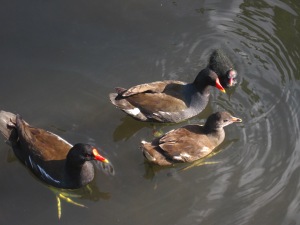![[Image description: the cover of All Cats Have Asperger Syndrome, which features a grey tabby kitten with an open mouth. A sticker indicates that the book was shortlisted by the Children’s Book Council of Australia.]](https://autismthroughcats.files.wordpress.com/2015/01/all-cats-book.jpg?w=300&h=290)
[Image description: the cover of All Cats Have Asperger Syndrome, which features a grey tabby kitten with an open mouth. A sticker indicates that the book was shortlisted by the Children’s Book Council of Australia.]
All Cats Have Asperger Syndrome refers to Aspergian people using only masculine pronouns (he/him/his). I’ve read a lot of books that always use masculine pronouns to refer to people whose gender is arbitrary, and I find this sexist and unpleasant, but it’s never put me off completely like it did with All Cats. But in the context of Autism, gender is a big deal for me.
I was twenty when it was first suggested that I might be Aspergian, and at first I thought it was ridiculous, because I was nothing like what I thought Asperger’s was. Then when I started reading about it I realised that Asperger’s would explain a lot of the things I thought were uniquely wrong with me, like my highly sensitive hearing and literal understanding of language. But I also read descriptions that I didn’t relate to at all, like the idea of a ‘little professor’ who is obsessed with computers or public transport and who doesn’t understand pretend games.
As I waited for my NHS Asperger’s assessment I was desperate to know if I had found the explanation for why I felt so different from everyone else, and for the things I had always thought were wrong with me. I built myself up for the day when I’d finally know the answer. The appointment was a few weeks before I was due to start university and I was glad that my diagnosis would come in time for me to get extra support.
But the psychiatrist decided that although I met most of the criteria for Asperger’s, she thought my intense interests in cats and fiction were normal, so I didn’t meet the narrow interest criterion. She said she couldn’t tell whether I had Asperger’s or not, and that I’d need to have another assessment with someone else. But she didn’t know how long I’d have to wait or even whether the assessment would be funded. I was distraught.
But I was lucky. My parents found a psychologist who specialised in diagnosing Aspergian girls and women, and paid for me to have a private assessment just before I started university.
Around that time I learned that the Aspergian traits of girls and women often appear different from those of boys and men, and that the way most nonautistic people understand and write about Asperger’s is based on how it appears in boys only. It’s not just me this affects; so many Autistic women have stories of missing a diagnosis in childhood, of having to fight to get one, of having multiple misdiagnoses.
Eventually I found a list of Aspergian traits specific to women and felt so relieved to learn that other people like me existed and to see our existence recognised. I learned that although the special interests of Autistic boys tend to be focused on things other people see as weird, Autistic girls often have unusually intense interests in topics other girls find interesting– things like animals and literature.
It was painful growing up not knowing there was anyone else like me, and believing there was something terribly wrong with me. And it was painful going through a failed assessment, to get my hopes up and share personal information with a stranger so I could get an answer that never came. I knew these experiences were likely related to my gender. My mum bought me All Cats Have Asperger Syndrome right after I got my diagnosis, when the pain was still raw. So I couldn’t bear to see another example of Autistic women being ignored and left out.

